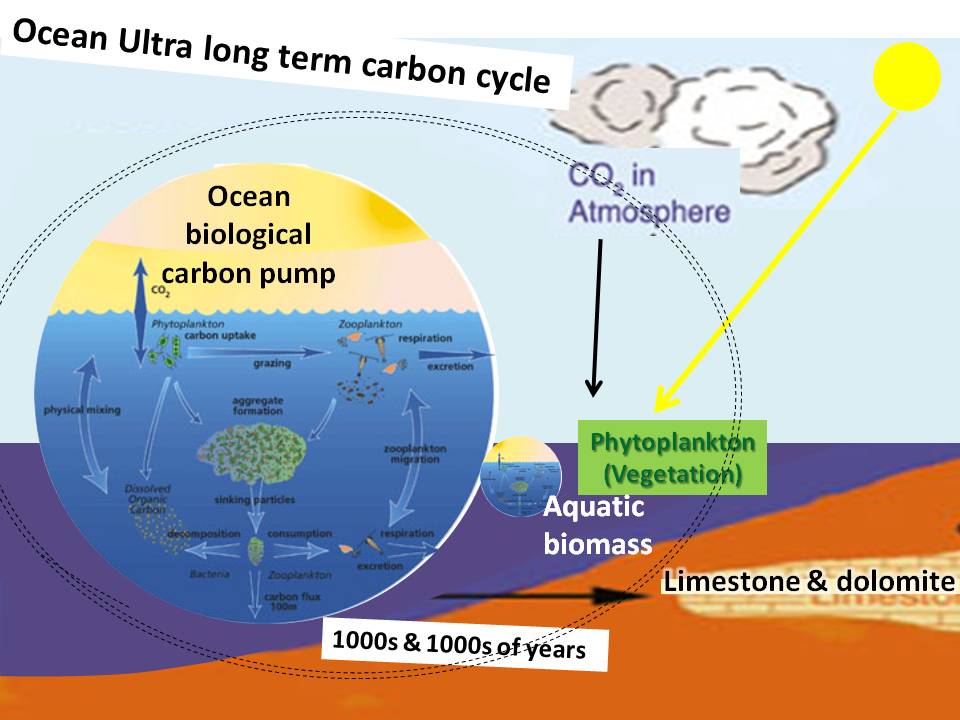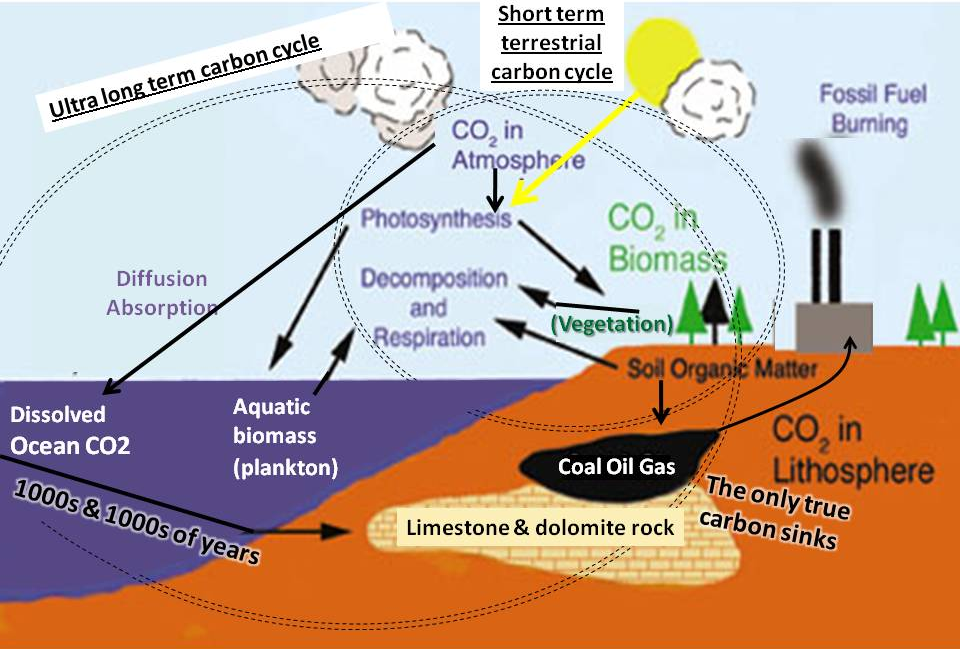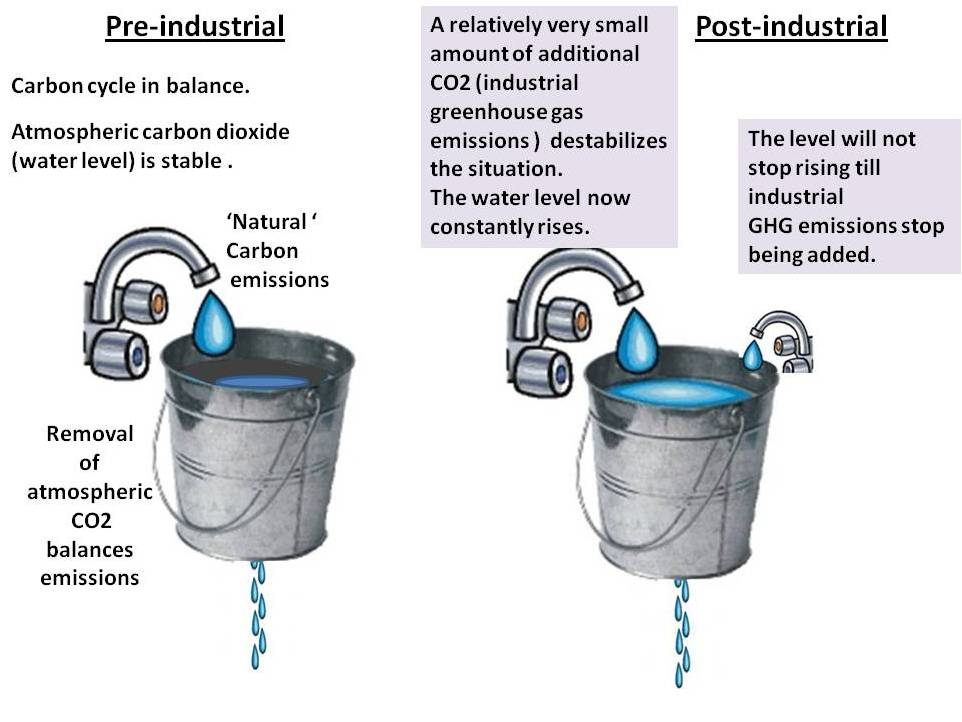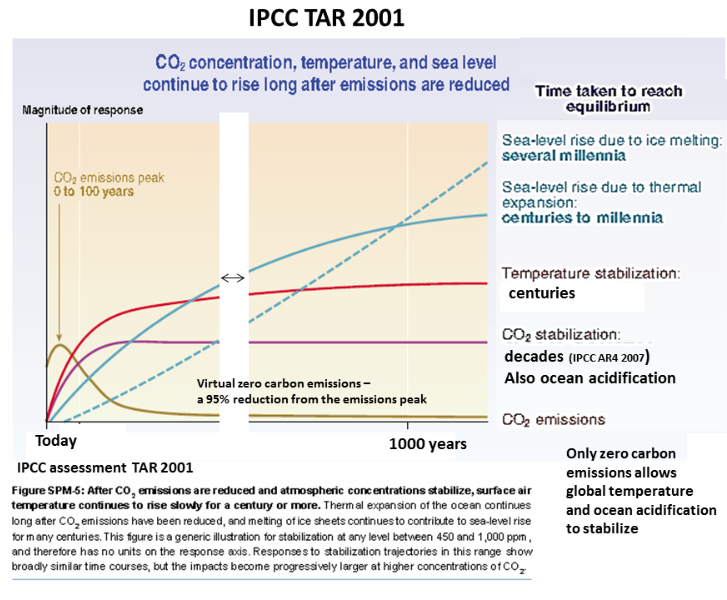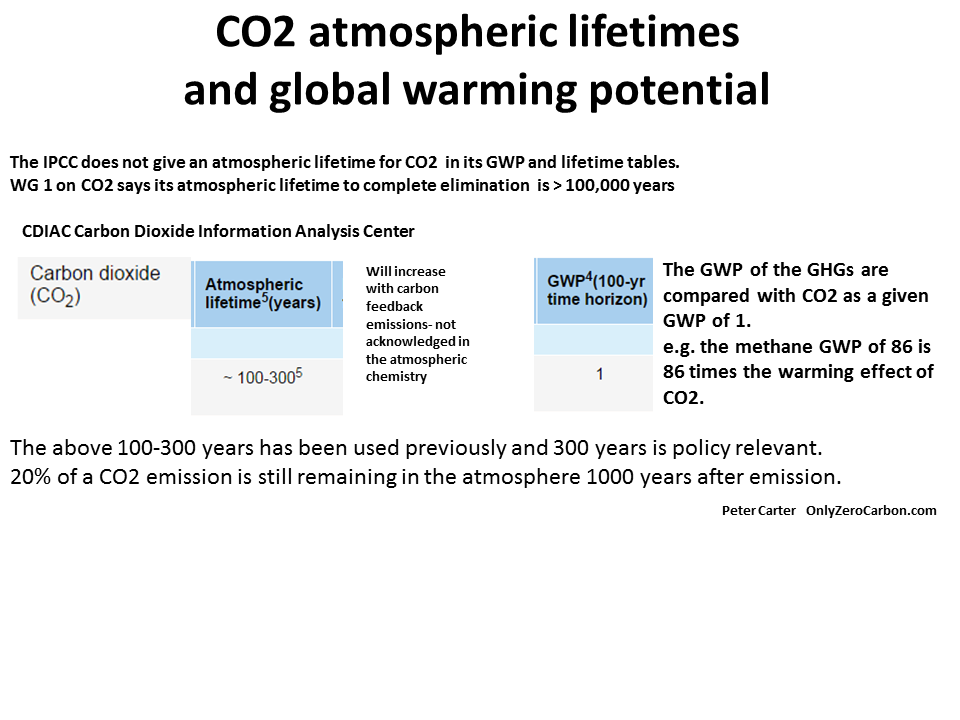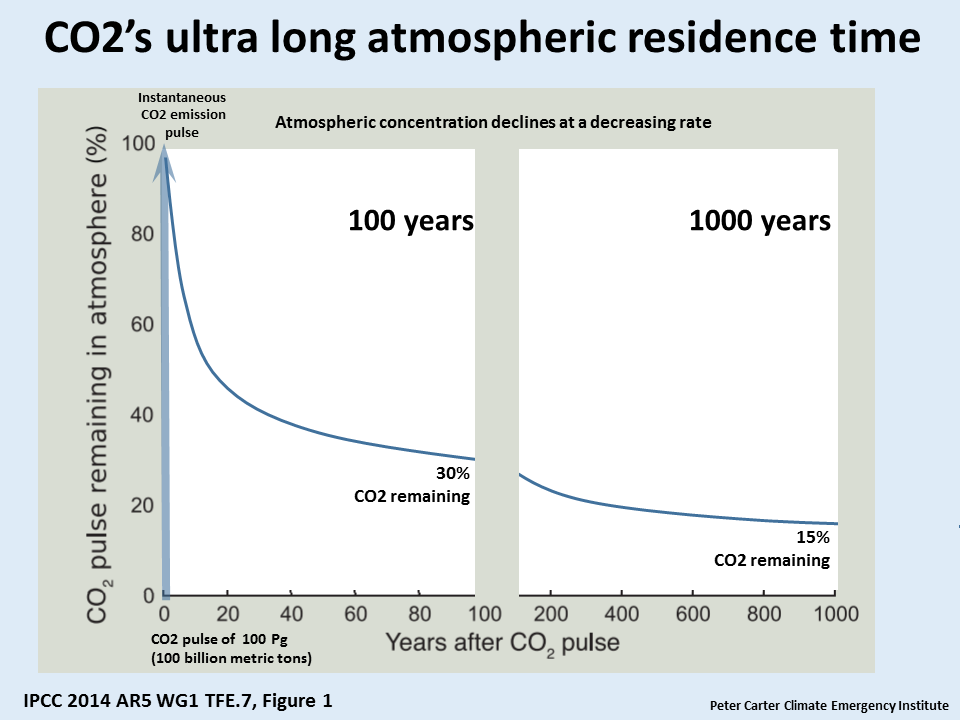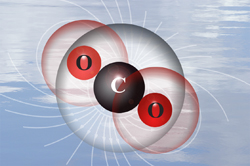CO2 is so highly persistent and therefore cumulative in the atmosphere that so long as any extra 'unnatural' CO2 is being constantly added to the atmosphere it must build up/accumulate in the atmosphere.
The big thing about CO2 is that 'Carbon dioxide is (practically) for ever'
Since 1750, 329 billion tons of carbon dioxide have been poured into the atmosphere from burning fossil fuels.
CO2 does not just vanish into thin air. CO2 is called a 'long-lived' GHG (i.e i the atmosphere). The reason is that CO2 is not reactive in the atmosphere (like methane). The only CO2 can decline is by being sunk as fossil carbon which takes forever. For this reason after emission 20% of the CO2 is still in the atmosphere after 1000 years.
Starting at today on the graph global carbon dioxide emissions are reduced to virtual zero, which is about 90% on this graph.
As emissions decline the rate of increase of atmospheric CO2 slows to a plateau (stabilizes)
How then can we ever stop global warming and climate disruption?
First we have to stop emitting carbon dioxide.
The properties and CO2 and the carbon cycle make that definite
Everything depends on doing that rapidly and immediately (IPCC AR6)
However even then there will be some increase in the carbon emissions, making the best that we can achieve virtual zero carbon emissions ('near zero' as the IPCC has put it).
only zero carbon only zero carbon only zero carbon only zero carbon only zero carbon only zero carbon only zero only zero
A CO2 molecule
For this reason, not only do CO2 emissions accumulate in the atmosphere, a very large proportion will persist for 1000s of years. In a practical sense that increasing proportion is there for ever.
CO2 is practically forever David Archer
'The largest fraction of the CO2 recovery will take place on time scales of centuries, as CO2 invades the ocean, but a significant fraction of the fossil fuel CO2, ranging in published models in the literature from 20–60%, remains airborne for a thousand years or longer.
Ultimate recovery takes place on time scales of hundreds of thousands of years, a geologic longevity typically associated in public perceptions with nuclear waste. The glacial/interglacial climate cycles demonstrate that ice sheets and sea level respond dramatically to millennial-timescale changes in climate forcing. There are also potential positive feedbacks in the carbon cycle, including methane hydrates in the ocean, and peat frozen in permafrost (D. Archer, 2-08, The millennial atmospheric lifetime of anthropogenic CO2).
A study (Long term fate of anthropogenic carbon) including some of the carbon feedback finds the CO2 lifetime is even longer. About 75% of CO2 emissions have an average perturbation lifetime of 1800 years and 25% have lifetimes much longer than 5000 years.'
According to the IPCC the removal of human-emitted CO2 from the atmosphere by natural processes will take a few hundred thousand years.
'Depending on the scenario considered, about 15 to 40% of emitted CO2 will remain in the atmosphere longer than 1,000 years. This very long time required by sinks to remove anthropogenic CO2 makes climate change caused by elevated CO2 irreversible on human time scale.'
Carbon dioxide CO2
CO2 is an extremely long lasting atmospheric GHG (long-lived in the atmosphere), hundreds of years
CO2 is a heat absorbing greenhouse gas
because of atomic structure-
an odd number (3) of atoms make up a CO2 molecule.
This gives the property of dipole, whereby the CO2 molecule
absorbs heat energy- it is activated by heat energy and it radiates heat.
A comprehensive overview of carbon dioxide, Sept. 2023
CO2
CO2 emissions - Ocean Acidification
CO2 is a soluble gas in water and is aborbed at the surface of the ocean becoming carbonic acid causing ocean acidification.
This reduces the ability of marine shell formers to make their shells
A large proportion (over 30%) of all the hundreds of billions of tons of CO2 that has been emitted is in the oceans as carbonic acid and that will remain in the oceans for thousands of years.
The IPCC graph is an illustration of climate change computer model runs. The computer model is run for the equivalent of 1000 years.
Climate and ocean cannot stabilize without carbon emissions falling to "near zero" (IPCC) as here.
The time frames here are indefinite
This is paragraph text.
Double click here to edit and add your own text.
